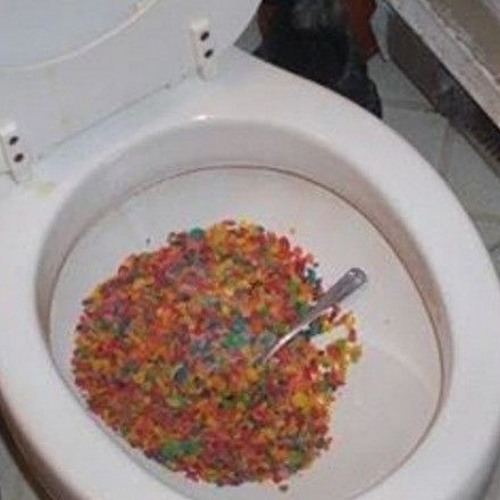What're your concepts about What Can Happen If You Flush Food Down the Toilet??

Introduction
Lots of people are typically confronted with the issue of what to do with food waste, specifically when it pertains to leftovers or scraps. One typical question that occurs is whether it's fine to purge food down the toilet. In this article, we'll look into the reasons why individuals might think about purging food, the repercussions of doing so, and alternative methods for appropriate disposal.
Reasons why people could think about purging food
Absence of understanding
Some people might not know the possible harm caused by flushing food down the bathroom. They may erroneously think that it's a safe practice.
Convenience
Flushing food down the toilet might look like a quick and simple option to disposing of undesirable scraps, especially when there's no nearby trash can available.
Negligence
In some cases, people might simply select to flush food out of sheer idleness, without taking into consideration the effects of their actions.
Repercussions of flushing food down the commode
Environmental effect
Food waste that winds up in rivers can contribute to air pollution and injury aquatic ecosystems. Furthermore, the water made use of to purge food can stress water sources.
Pipes issues
Flushing food can bring about blocked pipes and drains, causing pricey pipes fixings and inconveniences.
Sorts of food that should not be purged
Fibrous foods
Foods with coarse structures such as celery or corn husks can obtain tangled in pipelines and create blockages.
Starchy foods
Starchy foods like pasta and rice can absorb water and swell, bring about obstructions in pipes.
Oils and fats
Greasy foods like bacon or cooking oils ought to never ever be purged down the bathroom as they can solidify and trigger obstructions.
Appropriate disposal approaches for food waste
Making use of a garbage disposal
For homes equipped with waste disposal unit, food scraps can be ground up and purged through the plumbing system. Nevertheless, not all foods are suitable for disposal in this way.
Recycling
Particular food product packaging materials can be recycled, reducing waste and minimizing environmental influence.
Composting
Composting is an environment-friendly way to dispose of food waste. Organic products can be composted and utilized to improve soil for horticulture.
The value of correct waste administration
Decreasing ecological injury
Appropriate waste monitoring methods, such as composting and recycling, help minimize contamination and maintain natural resources for future generations.
Shielding pipes systems
By preventing the method of flushing food down the commode, home owners can protect against costly plumbing repairs and maintain the integrity of their plumbing systems.
Conclusion
In conclusion, while it might be appealing to flush food down the toilet for comfort, it is essential to understand the potential consequences of this activity. By embracing proper waste management techniques and throwing away food waste properly, individuals can contribute to much healthier plumbing systems and a cleaner atmosphere for all.
FLUSH FOOD DOWN THE TOILET?
FLUSHING FOOD CAN CAUSE BLOCKED DRAINS IN YOUR HOME
All of the plumbing fixtures in your home are connected to the same sewer pipe outside of your home. This outdoor sewer pipe is responsible for transporting all the wastewater from your home to the Council sewer mains. Even small pieces of food that go down the kitchen sink can cause problems for your sewer. It should therefore be obvious that flushing larger bits of food, such as meat, risks a clog in either the toilet itself or the sewer pipes. Flushing greasy food is even more problematic because oil coagulates when it cools, coating the interior lining of your pipes.
THE TOILET IS NOT A BIN
Food isn’t the only thing that people shouldn’t be flushing down the toilet. People use the toilet to dispose of all kinds of things such as tampons, makeup wipes, dental floss, kitty litter and even underwear. Water goes to great lengths to educate residents about the high costs and stress placed on wastewater treatment systems simply from people flushing the wrong stuff down the toilet. It costs taxpayers millions of dollars each year, and homeowners thousands in blocked drain repairs.
FLUSHING FOOD IS A WASTE OF WATER
Flushing food is a waste of our most precious resource - water. In June this year Level 1 water restrictions were introduced to protect water supply from drought conditions. Much of New South Wales continues to be affected by prolonged drought with recent figures revealing up to 97 per cent of the state remains in drought. Depending on whether you have a single or dual flush toilet, every single flush uses between five and 11 litres of water. In the current climate this is a huge amount of water to be wasting on flushing food that should be placed in the bin (or better yet, the compost).
https://www.jabplumbingsolutions.com.au/blog/can-you-flush-food-down-the-toilet

I'm very interested by Is it safe to flush food (especially rice) down the toilet? and I hope you liked the post. Sharing is nice. One never knows, you may be doing someone a favor. I treasure your readership.
Schedule An Appointment
Comments on “Is it Recommended to Dispose of Food Down the Toilet?”